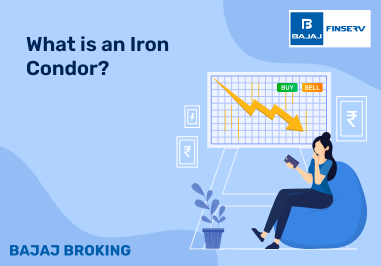What is the new STCG tax rate on equity mutual funds for NRIs?
- Answer Field
-
Starting July 23, 2024, the STCG tax rates for NRIs on stocks and equity mutual funds have risen from 15% to 20%
BAJAJ BROKING
The stock exchange, like the NSE, in collaboration with the SEBI, introduces an ASM framework to enhance the integrity of the market and protect the interests of the investors. The stocks whose price movements are abnormal and volatile are placed under the ASM list to monitor the trading activities. As of December 2024, NSE has updated its ASM list that contains the securities subject to increased surveillance to control excessive speculation and protect investors.
ASM is a surveillance measure introduced by SEBI and exchanges to regulate and monitor abnormal volatility in specific stocks. The basic objective is the protection of investors from unusual movements in the market and maintaining market integrity. Now that we know what is an asm list in the stock market, let’s move on to discuss further about the selection process.
Long-Term ASM List Overview
Those shares are added to the long-term ASM stocks list based on parameters that include high-low price movement, client concentration, the number of price band hits, close-to-close price movement, and market capitalization. Parameters identify stocks that may require an increased level of surveillance as risks posed by price movement or manipulation in the market are high.
Long-Term ASM Stages Explained
The ASM framework comprises multiple stages, each with specific surveillance actions:
Stage | Surveillance Actions |
Stage I | 100% margin requirement on trading positions. |
Stage II | Trading permitted only once a week (every monday) with 100% margin. |
Stage III | Trading permitted only once a week with 100% margin; additional 5% price band imposed. |
Stage IV | Trading permitted only once a week with 100% margin; additional 2% price band imposed. |
Short-Term ASM List Overview
The short-term ASM stocks list consists of securities with abnormal price movements in a short period. The conditions for inclusion are high price volatility, excessive volumes in comparison to the average, and concentrated trading patterns. The objective is to install temporary controls to check excessive speculation and stabilize the market.
Inclusion of the stock into the ASM stocks list might also have implications on the liquidity and the price movement of the security due to trading restrictions imposed. Investors must, therefore, be careful to carry out thorough due diligence and consider the risks that may arise before making an investment decision involving ASM-listed securities.
Another regulatory frame-work is the Graded Surveillance Measure (GSM). This has been initiated and issued by SEBI with all the stock exchanges towards the surveillance of securities bearing dubious fundamentals or which manifest abnormal price movements not consonant with their financial strength. The GSM framework puts alert and protects the investor through the imposition of grading surveillance and trading restrictions varying in degrees.
Securities may be placed under GSM based on factors such as:
A low market capitalization.
High promoter concentration.
A low public shareholding
Poor financial health.
Poor business models
GSM Stages and Their Significance
The GSM framework consists of multiple stages, each with specific surveillance actions:
Stage | Surveillance Actions |
Stage I | Transfer to Trade for Trade segment with a price band of 5% or lower. |
Stage II | Additional surveillance deposit of 100% of trade value to be deposited by buyers. |
Stage III | Trading permitted only once a week; additional surveillance deposit continued. |
Stage IV | Trading permitted only once a week with a price band of 2% surveillance deposit continued. |
Stage V | Trading permitted only once a month with a price band 2%; surveillance deposit continued. |
Stage VI | Trading suspended; no transactions allowed. |
These measures are implemented to safeguard investors and maintain market integrity.
The trade of GSM-listed stocks will come with some form of restrictions, and this may have repercussions on liquidity and investor sentiment. Market participants should be cautious, do more homework, and be very wary of the risks involved with GSM-listed stocks.
Both ASM and GSM frameworks are very important instruments that are utilized by the regulators in maintaining the marketplace free from volatile or low-quality securities. Investors have to be careful, watchful, and consider all the impact of these practices before investment decisions.
Do you have a trading account app or demat account app?
You can open an account with Bajaj Broking in minutes.
Download the Bajaj Broking app now from Play Store or App Store.
Disclaimer: Investments in the securities market are subject to market risk, read all related documents carefully before investing.
This content is for educational purposes only. Securities quoted are exemplary and not recommendatory.
For All Disclaimers Click Here: https://bit.ly/3Tcsfuc
Share this article:

What are Forex Options?
07 Jan, 2025 | 7 Min. read

Iron Condor: Meaning, Strategy, Advantages and Disadvantages
07 Jan, 2025 | 6 Min. read

A Thorough Guide to Understanding Currency Options
07 Jan, 2025 | 8 Min. read

Index Options Trading - Meaning, Benefits, and Risks
07 Jan, 2025 | 5 Min. read

Gold Rate Today | 7 January 2025 | Gold Price in India
07 Jan, 2025 | 40 Min. read

Caplin Point Tamil Nadu Unit Passes FDA Inspection with Zero 483 Observations
07 Jan, 2025 | 2 Min. read

Ashoka Buildcon secures ₹1,391-crore NHAI project in West Bengal
07 Jan, 2025 | 2 Min. read

Delta Autocorp IPO- Key Objective & Deep Analysis
07 Jan, 2025 | 4 Min. read

Bharti Airtel to sell 50% stake in Firefly Networks for ₹45 million
07 Jan, 2025 | 2 Min. read

Reliance Consumer Products launches RasKik Gluco Energy at ₹10
07 Jan, 2025 | 2 Min. read

How to Apply for BR Goyal IPO & Check Allotment Status?
07 Jan, 2025 | 1 Min. read

BR Goyal Infrastructure IPO- Key Objective & Deep Analysis
07 Jan, 2025 | 4 Min. read

RBI Launches ULI: Transforming Loan Access
August 27, 2024 | 4 Min. read

Textile Sector in India
September 20, 2024 | 5 Min. read

List of IPOs with DRHPs Filed
November 30, 2023 | 3 Min. read

Aditya Birla Group
September 28, 2023 | 10 Min. read

Bajaj Housing Finance Ltd IPO: Things Smart Investors Need to Know
September 05, 2024 | 4 Min. read

Budget Stock Ideas 2024-2025 | Stocks to Buy Today
July 24, 2024 | 4 Min. read

IPO Eligibility Criteria : Full Details
March 15, 2024 | 6 Min. read

What Is the Lock-In Period in IPOs?
October 18, 2023 | 6 Min. read

Godfrey Phillips Announces 2:1 Bonus Shares
September 16, 2024 | 7 Min. read

Jindal Group- A Comprehensive Analysis
September 27, 2024 | 7 Min. read
Starting July 23, 2024, the STCG tax rates for NRIs on stocks and equity mutual funds have risen from 15% to 20%
In the Union Budget 2024, it was announced that NRIs would no longer be eligible for the indexation benefit on long-term capital gains (LTCG) received from property sales. While there has been a 12.5% reduction in the tax rate, the inability to adjust for inflation means higher tax liabilities for NRIs.
There has been an increase in the TDS for NRIs on the sale of listed equity shares and equity mutual fund units.
As an NRI (Non-Resident Indian), you can purchase new or continue your investments in mutual funds. However, it’s crucial to comply with the rules and guidelines outlined by the Foreign Exchange Management Act (FEMA).
The LTGC for NRIs in the stock market has been increased to 12.5%, while the STCG have now been set at 20%
Once you become an NRI, you need to update your KYC details with your Asset Management Company (AMC). SEBI has relaxed the "KYC Registered" status rules for NRIs, and you can invest in mutual fund schemes (both new or existing) till 30th April 2025, without submitting any new paperwork.
The choice of mutual funds depends greatly on your financial goals, and also the country that you reside in. You should also keep in mind that certain mutual fund houses discourage investments from USA and Canadian NRIs.
For NRIs, short-term capital gains (STCG) from mutual fund units held for less than a year are taxed at 15%. Investments in equity-oriented mutual funds are tax-free up to the annual exemption limit of ₹1 lakh for long-term capital gains (LTCG)
No, tax on mutual fund capital gains isn’t automatically deducted. You have to pay it when you redeem your units. However, TDS (Tax Deducted at Source) is applicable on dividend income from debt funds.
No Result Found
Level up your stock market experience: Download the Bajaj Broking App for effortless investing and trading
